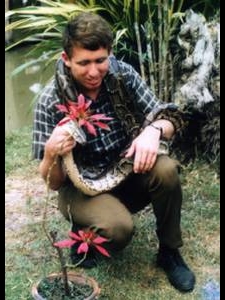Frank Arthur DawsonAirmanVO-67, 7TH FLEET United States Navy 29 September 1946 - 17 February 1968 Fairfield, CA Panel 39E Line 070 |
  
|
 Photo courtesy VO-67  
|
The database page for Frank Arthur Dawson
REMEMBEREDTHE ACTIONAs early as 1965, the Army commanders in Vietnam wanted to close the Ho Chi Minh Trail by occupying the critical road junction town of Tchepone in Laos, midway between the South Vietnam and Thai borders. Political objections precluded what was, unequivocally, a solid military objective. Instead, the military was directed to close the Trail by air action alone. A major part of that effort involved seeding the Trail area with acoustic, magnetic, and seismic sensors which could detect and report troop and vehicular movements. Air attacks could then be laid on based on intelligence gained from the sensor fields.The Navy's anti-submarine patrol forces were intimately familiar with electronic sensors and accepted the responsibility for placing certain types of sensors. Observation Squadron 67 (VO-67) was formed for that purpose, flying specially equipped P-2 NEPTUNE aircraft - the OP-2Es - from Nakon Phanom Air Base in Thailand. VO-67 did superb work, demonstrating that this WW-II era aircraft could place the sensors within a few feet of the desired point while operating in all-weather conditions at very low altitudes. VO-67 conducted operations along the Trail from November 1967 through June 1968, losing two aircraft and crews during this period. On 17 February 1968, a OP-2E aircraft (BUNO 131486) from VO-67 departed Thailand in a flight of four aircraft on an operational mission over Laos. The crew of the aircraft included Commander Glenn M. Hayden; Lt.Jg. James S. Kravitz; Lt. Curtis F. Thurman; Ensign James C. Wonn; AO2 Clayborn W. Ashby, Jr.; ADJ2 Chester L. Coons; AN Frank A. Dawson; ATN1 Paul N. Donato; and AN James E. Martin. After completion of the first target run, the aircraft reported to its fighter escort and forward air control aircraft that it had been hit by small arms fire but would continue with the second target run. During the second run, the fighter escort reported the starboard engine of the P-2 on fire. The P-2 acknowledged the report and aborted the rest of their mission to return to home base. The last radio transmission from the aircraft was, "we're beat up pretty bad." The fighter escort climbed to the top of the overcast to await the P-2's rendezvous, but the aircraft never emerged from the cloud base. The fighter dropped below the clouds to search for the P-2 and found burning wreckage. No parachutes were seen, nor were any emergency radio beepers heard. Search and rescue efforts were negative. Investigation of the crash site was not feasible because of enemy presence in the area. The aircraft crashed about 34 kilometers northwest of Tchepone in Savannakhet Province, Laos. The crash site was situated 2,800 meters south of route 91 in rugged terrain on the side of a 550 meter ridge, approximately 4 kilometers northwest of Muang Phin. All nine men aboard were lost. Airman Frank Dawson's remains were repatriated in 1993. From the POW Network and the VP Navy web sites. |
| Frank Dawson is also
remembered by his comrades in VO-67 www.vpnavy.com/vo67mem.html |
|
A memorial from his friend, Garry Stone LCPL USMC E-Mail may be forwarded via the Webmaster@VirtualWall.org 23 Mar 2001 |
|
Top of Page
www.VirtualWall.org Back to |
With all respect
Jim Schueckler, former CW2, US Army
Ken Davis, Commander, United States Navy (Ret)